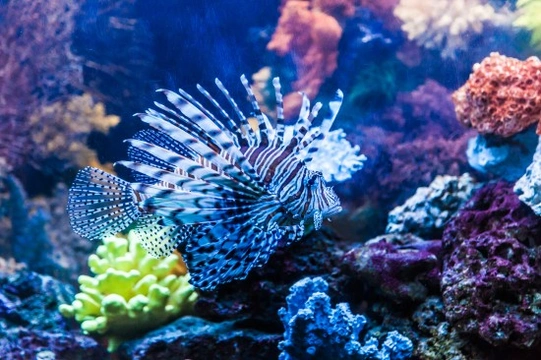Pets
Pets for studWanted petsBreedersAccessories & services
Knowledge hub
Support
Support & safety portal
The most common mistakes novice marine aquarium keepers make
Many people aspire to keeping a beautiful, vibrant saltwater (marine) aquarium, and today with our enhanced understanding of the marine tank and the modern technology we have at our disposal, this is no longer limited to the realms of professional fish keepers and lifelong hobbyists.
Providing that you do plenty of research first and know what you are getting into, theoretically, any marine enthusiast can potentially keep their own tank of either fish or corals or both, and the marine keeping hobby is becoming ever more popular year on year. However, it is important to understand that the marine aquarium is a very complex ecosystem, and that even a small mistake or imbalance can throw the whole tank out of whack, leading to a potentially distressing and costly loss of some or all of your livestock.
In this article, we will look at some of the most common and preventable mistakes that novice marine aquarium keepers make when first setting up and enjoying their tank.
Stocking the tank too quickly
Setting up a marine aquarium takes a great deal of time and patience, and never more so than when you are getting it ready to add your first livestock.
Live sand, rock and water needs to be added and have plenty of time to cycle, then you will need to undertake several further water changes while the tank settles down, plus get the filtration media live and working, before you can even add your very first fish. This takes several weeks to achieve, and getting impatient and adding your first stock too early can soon prove disastrous!
Adding too many residents for the tank
As well as adding stock to the tank too soon, adding too many fish or organisms to the tank is another big rookie mistake. When you add your first fish, it should be one fish, or two at the most; the tank will then need a few more weeks to settle before your next addition. All told it, it can take up to a year to get a marine tank going from scratch to capacity, and this is not something that you can rush! Having too many fish, adding them too fast or not allowing room for them to grow, will soon overload your system.
Feeding too much
Anyone who ever kept so much as a goldfish will tell you that fish generally appear to be permanently hungry, and always look as if they are on the hunt for food! Overfeeding within a marine tank environment can prove a real problem, as decaying food will overload the filtration system, leading to pollution and poor water quality within the tank.
Monitor how and when you feed your fish, and never feed so much that uneaten food is left festering in the tank.
Not researching compatibility
A bright, vibrant marine tank full of beautiful and exotic fish certainly draws the eye, but a large mixture of a wide range of different species and sizes of fish can be a recipe for disaster! As with any ecosystem, some fish view certain others as prey, and will make a meal of your expensive purchase, while some fish are much more aggressive than others, or highly competitive over food. Even if your large/dominant fish do not try to eat your other fish, they could easily starve them out if they get to the food first and keep the other fish away.
There are a great many different combinations of tank mates available, and picking and adding your very first fish will dictate and narrow down your options for later additions, so choose wisely!
Whether or not you intend to keep coral in your tank will also affect what fish you can choose; some fish need a tank containing coral to thrive, while others will soon eat all of your expensive displays, and are better kept without coral!
Buying fish without researching them first
As well as researching the compatibility of the various fish you wish to keep, it is also vital to research the care and housing requirements of the individual fish themselves. Some fish are challenging to feed, will not thrive within a mixed tank, or have very specific requirements in terms of their water parameters, which the average mixed occupant aquarium simply cannot provide.
Not having a plan for sourcing water
In order to provide water for your tank, you will need a source of reverse osmosis water mixed with special aquarium salt. In order to produce reverse osmosis water, you will either need to install a machine at home (and watch your water bills rise, as the filtration process wastes a lot of water) or have easy access to an aquatic retailer that can sell you water regularly.
Many first time keepers grossly underestimate the amount of water they will need, when you take into account the need for water changes, natural evaporation and maintaining the tank. You will need to buy or produce a significant number of gallons of reverse osmosis salted water every week, so make sure you know how you are going to go about this!



